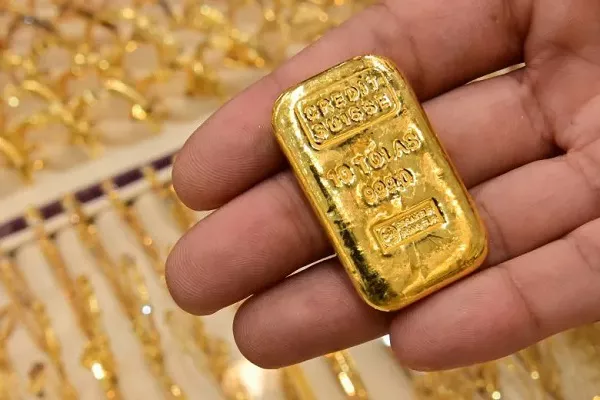Gold prices experienced a notable surge during Asian trading on Monday, driven by heightened geopolitical tensions following Iran’s attack on Israel. The attack, perceived as retaliation for an earlier incident involving an Iranian embassy in Syria, reignited concerns of a broader conflict in the region.
Spot gold saw a 0.6% increase, reaching $2,357.81 per ounce, while June gold futures maintained stability at $2,373.0 per ounce after hitting a record high of $2,389.0 per ounce. This surge brought gold within striking distance of its all-time high, demonstrating investors’ flight to safety in the face of uncertainty.
The Iranian strike, which marked a potential escalation in the Israel-Hamas conflict, raised fears of a wider conflict that could draw in major global powers, including the United States. However, reports indicating limited damage in Israel and indications of a measured response from Israeli ministers tempered some of the safe-haven demand for gold.
Nevertheless, the underlying geopolitical tensions continued to underpin gold prices, reflecting investors’ appetite for assets perceived as safe havens during times of instability. This sentiment was further reinforced by recent diplomatic efforts to deescalate the situation, with the United States expressing its intention to refrain from retaliatory actions against Iran.
Despite the surge in gold prices, the strength of the US dollar and concerns over the prospect of higher interest rates in the US, fueled by hotter-than-expected inflation data, served to cap further gains in the precious metal.
In addition to gold, other precious metals experienced mixed performance on Monday. Platinum futures declined by 0.7% to $985.05 per ounce, while silver futures retreated by 0.3% to $28.258 per ounce.
Meanwhile, industrial metals displayed varied movements in response to economic indicators from China, the world’s largest importer of commodities. Copper prices exhibited a mixed trend, with three-month copper futures rising by 0.4% to $9,457.0 a ton on expectations of tighter supplies, while one-month US copper futures fell by 0.6% to $4.2888 a pound amid weaker economic signals from China.
Aluminum, on the other hand, rallied significantly on Monday, surging by nearly 5% to $2,605.0 a ton on the London Metal Exchange. This rally was driven by concerns over potential supply disruptions following new sanctions imposed by the US and UK on Russia in response to its invasion of Ukraine.
Overall, the surge in gold prices underscores the ongoing geopolitical uncertainties in the Middle East and the broader implications for global markets, highlighting the role of gold as a traditional safe-haven asset during periods of turmoil.


